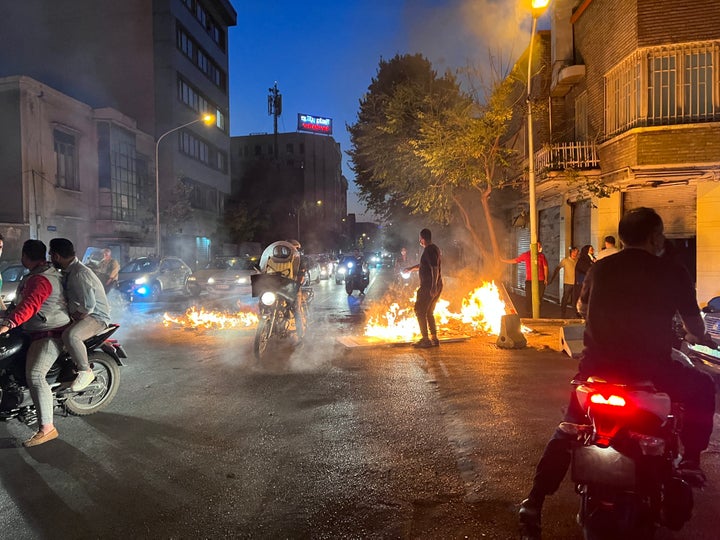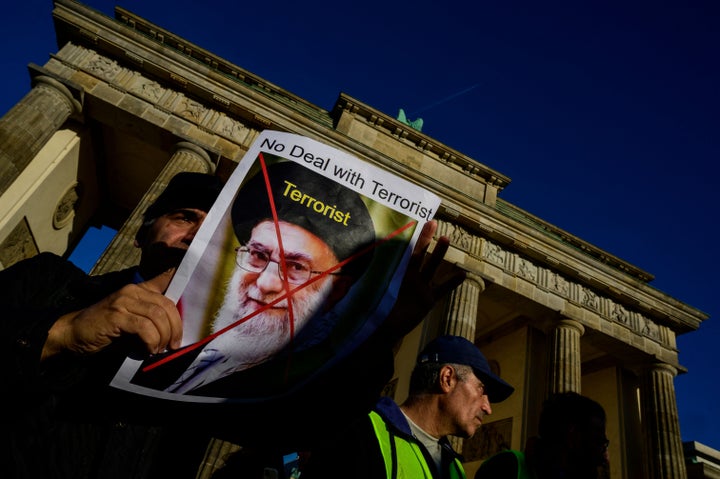Anti-government protests in Iran have grown larger in recent weeks, but the government’s brutal response has raised questions about whether the demonstrations can effect meaningful change in the country.
The protests erupted in the streets of Iran last month in response to the death of Mahsa Amini, 22, who died after being arrested by morality police in Tehran for wearing “unsuitable attire.” Protesters demanded justice for Amini’s death, as well as the abolition of the mandatory hijab, a head covering worn by Muslim women, and the so-called “Guidance Patrol,” the morality police who have long suppressed and harassed women in Iran.
However, the demonstrations have quickly morphed into calls for “death to the dictator” — referring to Iran’s supreme leader, Ali Khamenei — and the downfall of the Islamic Republic.
“There were a lot of pent-up grievances,” Sina Toossi, a senior nonresident fellow at the Center for International Policy, told HuffPost. “Just across the board, you see economic grievances, political grievances, social freedom grievances.”
The current wave of protests is the largest since the Green Movement of 2009 when millions of people took to the streets to demonstrate against what they saw as a rigged election. Other protests have gripped the country since then; many have been triggered by economic issues, including an increase in gasoline prices in 2019.
“People have grown more disillusioned, they’ve lost more hope [in] any kind of change from this system,” Toossi said. “And so, we immediately see this outpouring of anger.”
“What’s really emanating from these protests is this call for fundamental change,” he added.

‘Iron-Fisted Clampdown’
Officials at the highest levels of Iran’s government have blamed the weeks of unrest on foreign interference. In his first public response to the protests, Khamenei blamed the United States and Israel for instigating the demonstrations.
And the government’s response to protesters has been unyielding. Security forces have shot at and detained protesters and imposed internet restrictions.
Human Rights Watch verified 16 videos posted on social media that depict protests from September 17 to 22. The videos show police and other security forces using excessive and lethal force against protesters, including shooting them with handguns and Kalashnikov-style assault rifles.
At least 52 people, including women and children, have been killed, according to Amnesty International. Hundreds have been injured and at least 3,000 others have been arrested and are currently in detention, Iran International reported.
However, the widespread internet blackouts have made it difficult to confirm the numbers.
The Iranian government’s “real approach to these kinds of protests and domestic pressures is that when they’re under immense pressure, they don’t want to give in to that pressure,” Toossi said. “This is common as the establishment’s philosophy there. They would think that [giving in to protesters’ demands] would create a slippery slope and would signal weakness.”
“Right now, we see in line with the playbook is an iron-fisted clampdown on these protests,” Toossi added.

Reform Or Regime Change
The most common slogan that has been chanted in the streets has been “Woman! Life! Freedom!” But other marchers chant “death to the dictator,” expressing their desire for a change from the regime that has been in power for 43 years.
“Iranian society is a polarized society,” Toossi said. “I don’t think we should lose sight of the fact that there are many people who are united in their vehement opposition to the status quo, but within that, there’s a broad spectrum of different views and how much change people want, what kind of system they would want to replace.”
However, the outcome of past protests indicates that the current demonstrations are unlikely to lead to the downfall of the current system.
“Some major elements are missing for this to be capable of leading to regime change,” Ellie Geranmayeh, deputy head of the Middle East and North Africa program at the European Council on Foreign Relations, told HuffPost in an interview.
“First, the movement has not yet mobilized mass labor strikes across the country in support; we have not seen visible major splits among Iran’s security apparatus; and Iran’s leaders retain monopoly of control,” she said.
The government’s violent crackdown on protesters has also cast doubt on whether the demonstrations could lead to lasting change in the country. Government intimidation has proven effective in similar situations over the last several decades.
“If we go by the past, that is not the playbook,” Toossi said. “The playbook is that they do the iron-fisted clampdown, and they talk about change ... they allow, for a little amount of time, more discussion and dialogue at the official level or bring in some more dissident voices. But then nothing really changes.”

